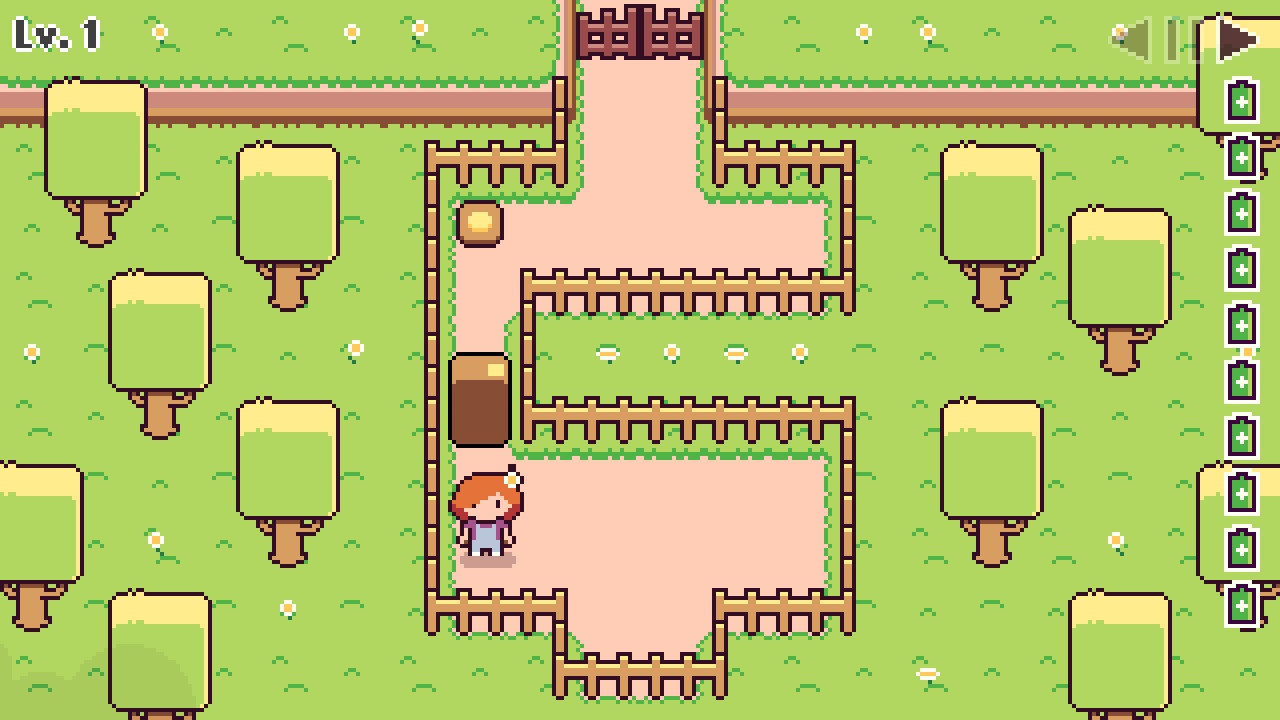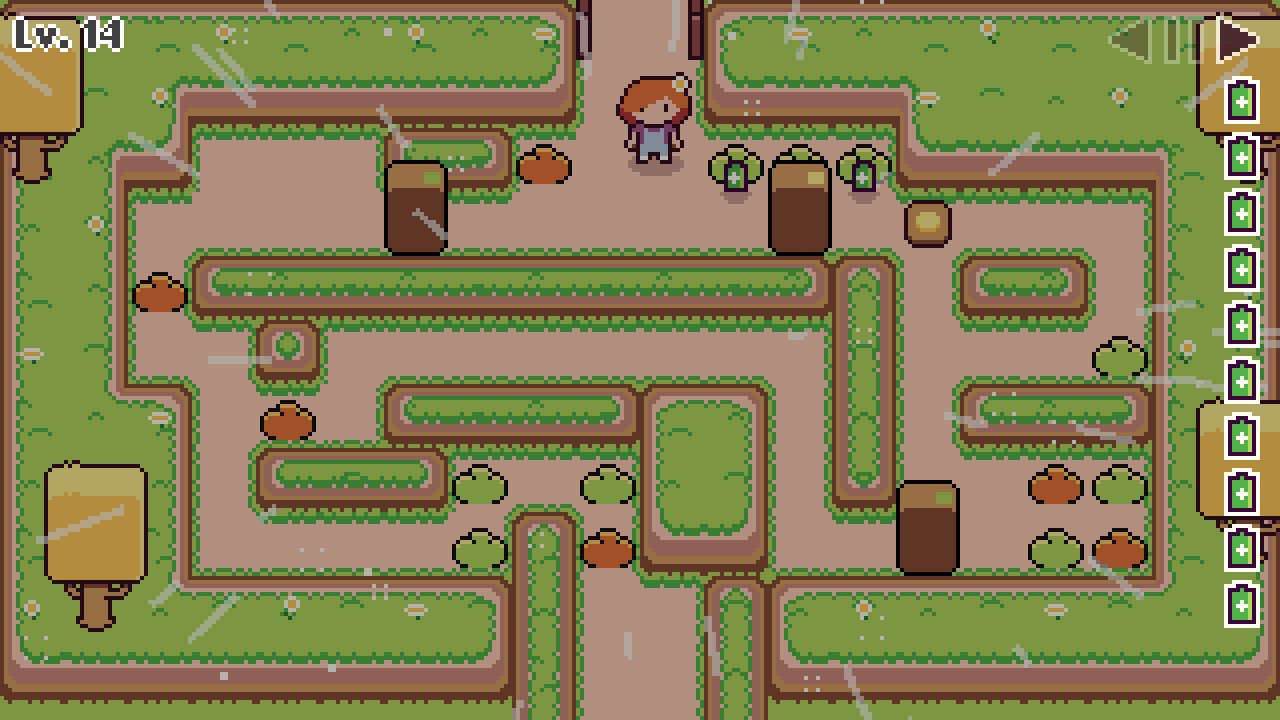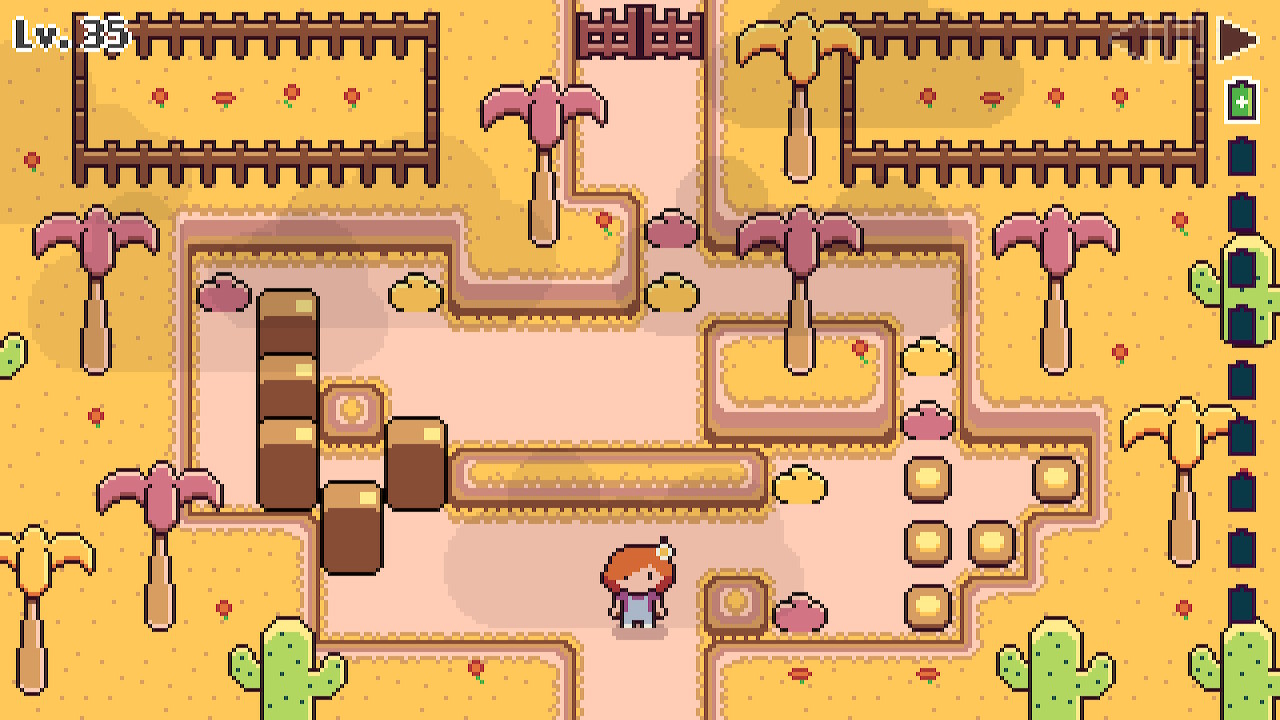Super Box Land Demake
This great-looking Sokoban-like has some excellent levels, but too few of them
I went through a range of emotions playing this game, which is not an effect I’d expect a box-pushing puzzler to have. Unfortunately, they can be summed up with the words ‘meh’, ‘ooh, promising’, and ‘meh’ again.
Push stuff around a grid, trying to get it into the right positions. It’s a puzzle sub-genre that has been done many times before, most notably by Sokoban (and countless variations), most recently — and, possibly, most inventively — by Baba Is You. But Super Box Land sticks true to the Sokoban formula of pushing boxes onto targets, with no complicated extras.

Of course, this isn’t necessarily a bad thing. People clearly like this type of puzzle and, I suspect, would play the simplest possible version of it: just plain squares on a grid would suffice, if those individual puzzles were captivating enough. And, to give it credit, Super Box Land makes a token attempt to go ever-so-slightly further with a 2-player mode, and a ‘rewind’ function (more of that later). But, really, it sets itself up to be completely focussed around box-pushing, so there’s very little room to hide here: we either have a set of good box-pushing puzzles, or we don’t.
With so little going on in terms of gameplay mechanics, you’d expect a tight, polished game — regardless of how well the puzzles have been designed. Sadly, the persistence of one single bug severely hampers the experience. Under certain conditions — and I have no idea what these conditions actually are — the box you’re trying to push will, er… become transparent. And sort of not-quite-there. You can walk through it (and sometimes will, accidentally). If you’re of a particular mind or will, you can abuse this to skip several levels of the game entirely. I wouldn’t mind so much if it was avoidable but, sometimes, it transports you somewhere you wouldn’t otherwise have reached, so you then have a dilemma: carry on and ‘cheat’, or try to get back to where you were without moving anything else, not wanting to destroy the past by messing about in the awkward future tangent you’ve created.
Speaking of messing about with time travel, there is a supported ‘rewind’ function which feels maybe like it was tacked on without being fully thought through. It just doesn’t feel balanced: you can only undo a very small number of moves and it’s usually easier to just reset the level by leaving through the entrance and returning. I went through the whole game barely making any use of it.

So, what about the puzzles? After all, I’ve managed to find fault with most other aspects of this game, how about the thing that actually matters the most?
Here’s the first 3 (this isn’t spoiling much!):
They continue in much the same vein way for quite some time, but more variation slowly gets added. The main problem is typically how to move each ‘box’ without putting it in a position from which it cannot be moved. Sometimes this involves moving it in an uninuitive direction. Other times it involves moving multiple boxes as part of the same ‘step’. Some of the levels can be tackled in reverse: work out how it’s possible to move a box onto each target square, then work backwards from there.
Many of the puzzles are symmetrical, with half the bozes on one side, half on the other. This makes for pleasing visuals, but in terms of gameplay, it just produces two smaller, identical puzzles. It’s not much fun doing the same puzzle twice, although it seems there is sometimes a concession to this — e.g. one half is upside-down, at least.
It’s slightly annoying that the boxes that are key to the game aren’t … really boxes? Am I the only one seeing that weird protrusion at the top that kinda makes them look like some kind of sleeping bag or fridge freezer. They sure aren’t the thing in this picture:

That’s … well, it’s a least a cube if not really looking quite like a box.
There’s a serious point to this digression: with the boxes that weird rectangle shape, it’s that much more difficult to line everything up along the invisible ‘grid’ that positions it all. On several ocassions, I couldn’t quite tell if there was a gap somewhere or not.
So the first 20-30 levels or so are all pretty straightforward, some are downright disappointing, particularly when the solution is trivially easy, even still at this stage. But, then, there are some really well designed, fun-to-play, challenging levels. Level 28, for example, was the first that really grabbed me as an excellent puzzle level. Level 29, in contrast, was pedestrian — just no challenge at all. Then came Level 35, which was absolutely delightful, a real gem of a level.
I really did feel grateful for these wonderfully well put-together levels, but overall quality was inconsistent. There must’ve been about 10-15 very good levels, 30-40 almost pointless ones, and about half middling.

Verdict
😕
I’m a bit confused by this game. It has lots of flaws I could point at across the board. The only area in which it’s totally free from criticism, really, is visually: the graphics are clean, attractive, funny, just enough to add some colour to the gameplay without distracting from it.
But, despite all the areas in which it falls slightly short, I still enjoyed playing the game. It was fun to pick up, play a few levels of, then move onto something else. I played the last 40-50 levels in one sitting, and that was fun, too. It’s a good handheld game, perfect for travel. It’s sorely in need of some better level design, though.
I played Super Box Land Demake for 5 hours, about 50/50 docked / handheld. I’m going to be honest: having completed it, this game has almost zero replayability, for me at least.
I played & reviewed Super Box Land Demake as part of the #IndieSelect initiative run by @Xinthus. It meant that I received a copy of the game for free; the game is priced at £4.99 normally.
The game was developed by Juliano Ferreira de Lima and ported by Ratalaika Games.